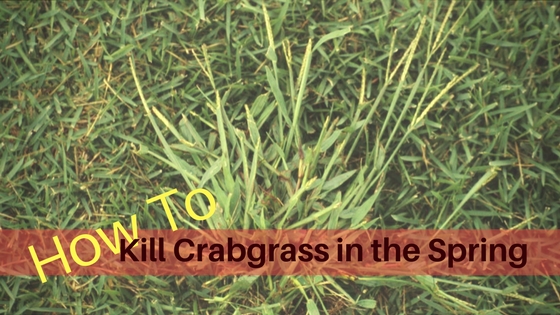How to Kill Crabgrass in the Spring
Each year, frustrated home and land owners seek out conventional ways to defeat stubborn weeds that detract from the beauty of a lush, green lawn. Perhaps the most common and notorious of these weeds is crabgrass, a summer annual weed that spreads quickly during an ideal warm environment. Menacing crabgrass can quickly turn a thriving green lawn into an unattractive quandary. Because no one wants to spend the summer on their hands and knees pulling unruly weeds up by the roots, it is best to vanquish them before they become obstinately embedded. Crabgrass germinates early in the Spring for many parts of the country causing the weed to grow out of control before it is ever treated. Though it may seem to be an inevitably perpetual problem, crabgrass is easily conquered with the proper tools, timing and diligence to carry out the task.
The Problem with Crabgrass
Crabgrass grows in a “crab-like” shape that branches out into many sections, choking out healthy grass and devaluing the beauty and hard work that goes into a flawless lawn. Some crabgrass can grow as high as 36 inches – though most remain under a foot tall. This summer weed can usually be found growing in areas of low grass growth or in overly dry ground. In addition to being an eye sore, some gardeners may find that it has a tendency to stifle young plants from growing to fruition.
Killing Crabgrass
There are many crabgrass killers on the market that are capable of stopping crabgrass in its tracks if they are used properly. Because crabgrass germinates early in the Spring, it is best tackled before it has a chance to set in the ground and take root. For this, use a pre-emergent herbicide that is applied when the first seedlings begin to germinate. Pre-emergent herbicides kill crabgrass by acting as barrier against newly sprouting weeds.
Check Out: Guide to Vegetation Killers to learn more about pre-emergent herbicides
There are several types of pre-emergent herbicides that include liquids, granules, organic and synthetic. Regardless of the type chosen, a pre-emergent herbicide should be applied to the ground when the temperature of the soil reaches 50 degrees Fahrenheit for numerous consecutive days. It is important to avoid aerating the yard after it has been treated for crabgrass, as this could render the herbicide void.
Other ways to challenge the weed include keeping grass mowed at a length of at least two inches, pulling plants that evade the herbicide, heavily overseeding the grass, and applying fertilizer to encourage a dense lawn. If the window for pre-emergent herbicidal treatment has past, a post-emergent herbicide crabgrass killer can be applied while the crabgrass plants are very small.


